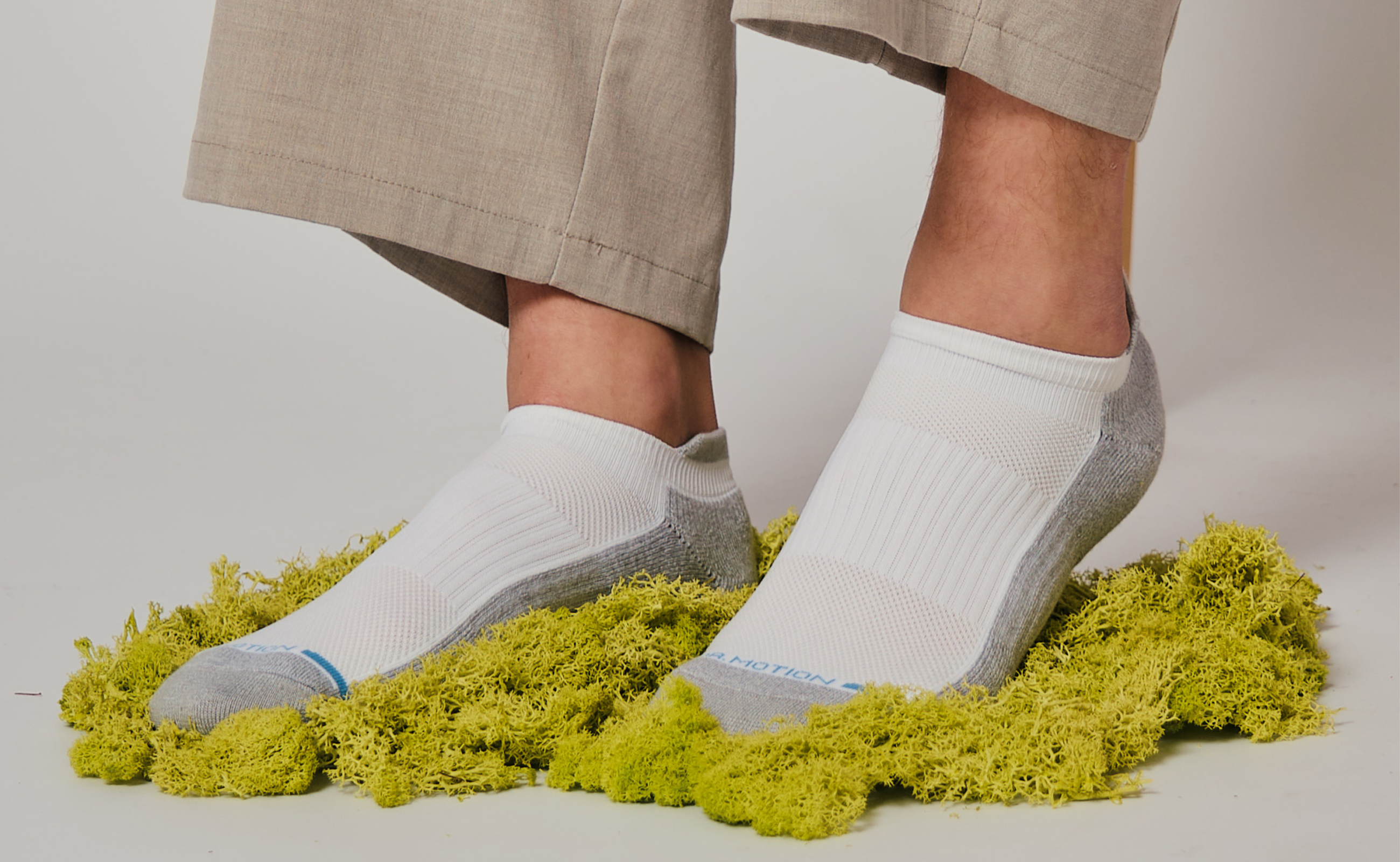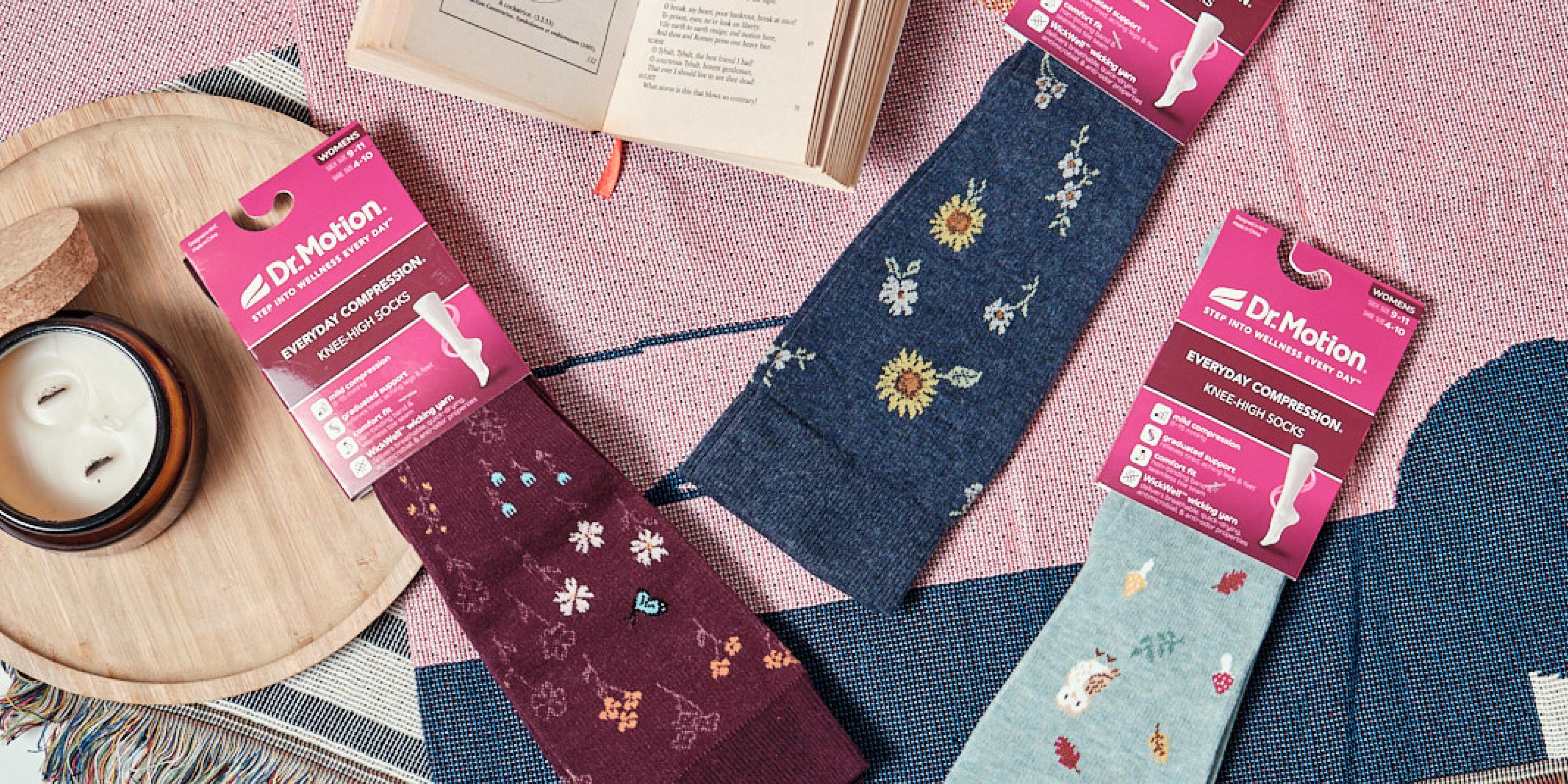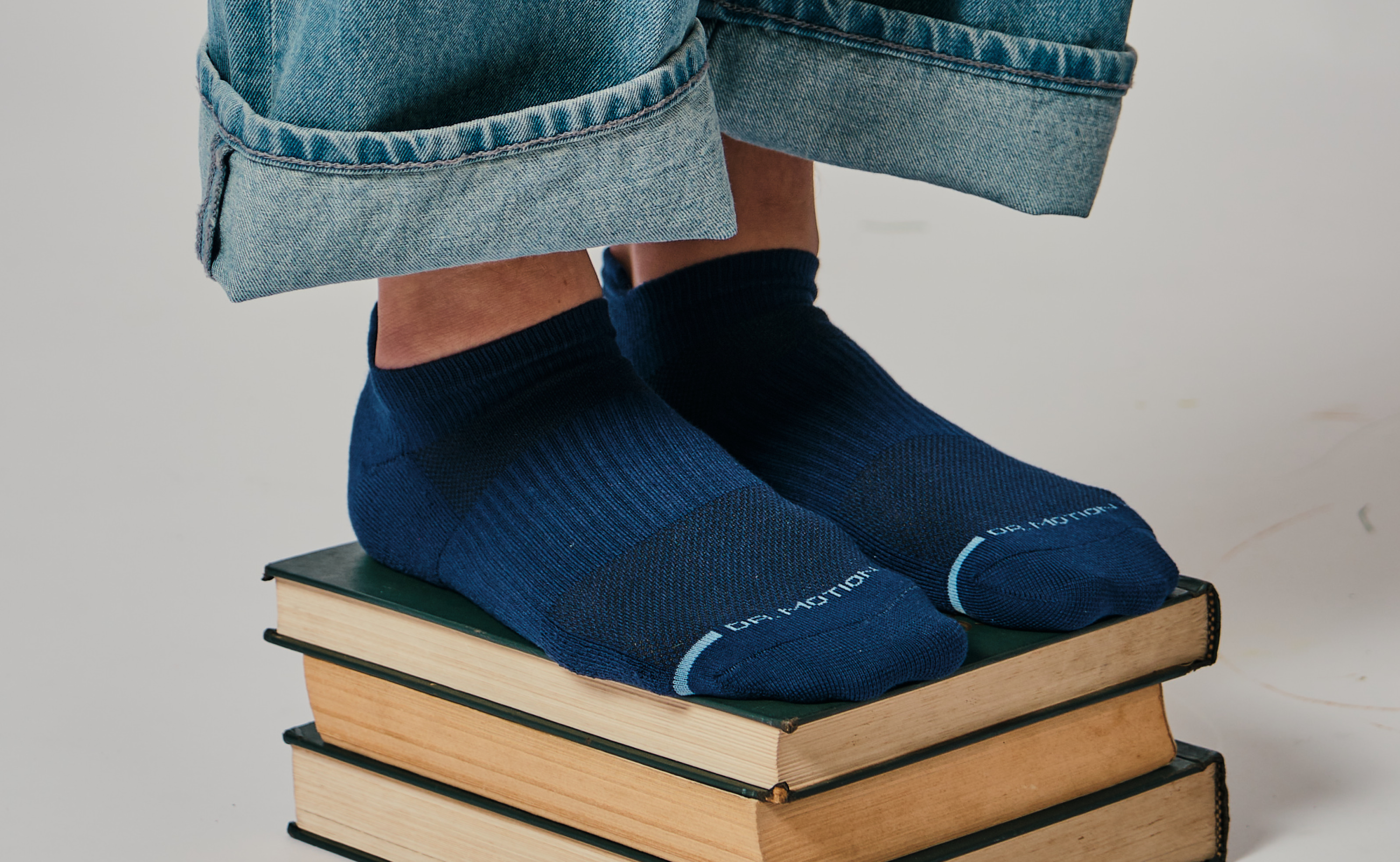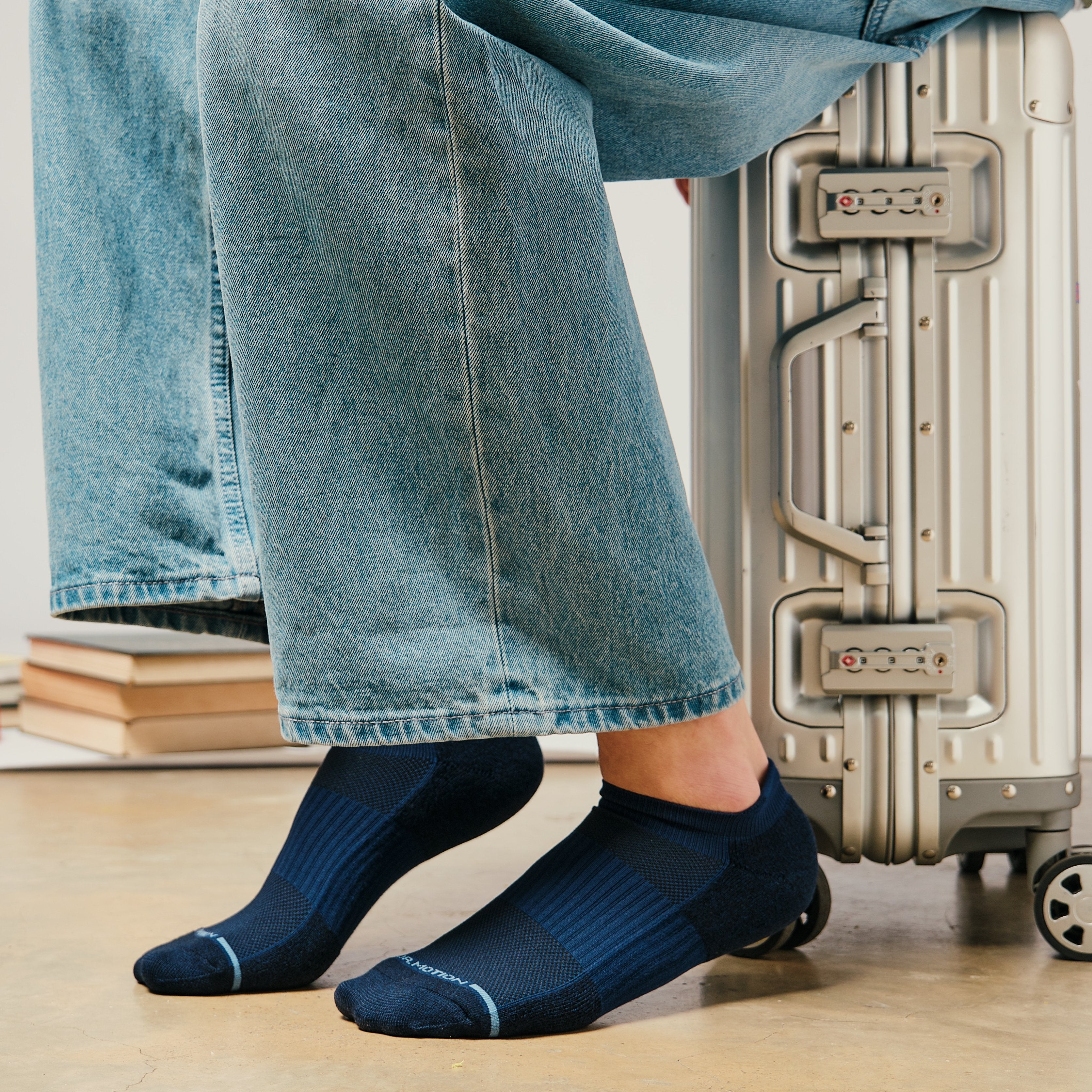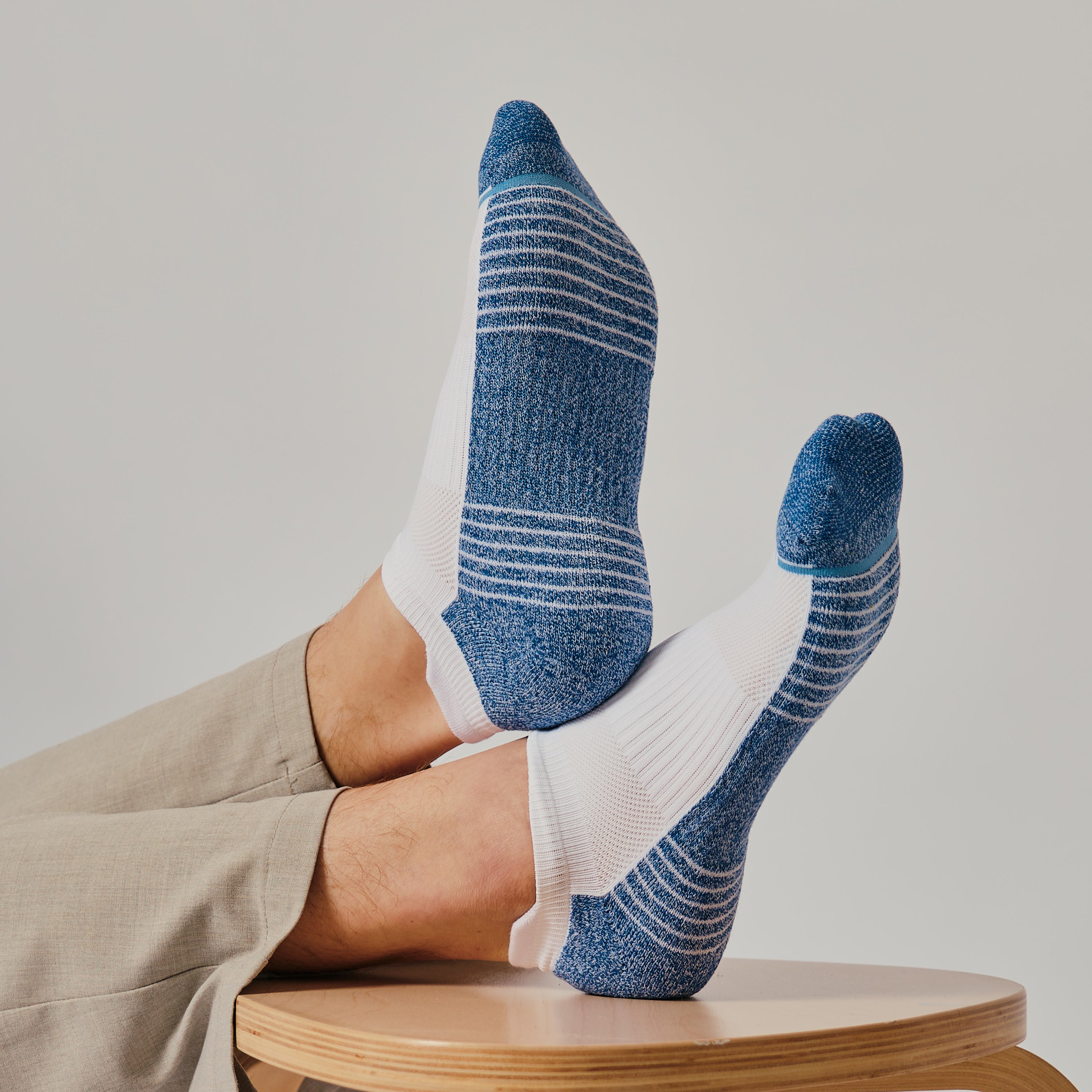Why You Should Wear Compression Socks When Flying
It’s been a long flight. You felt the plane come to a complete stop, but you’re waiting for the doors to open. You’re desperate to finally stand up after sitting for so long. Stretching your legs is going to hurt so good.
If you can relate to this, then you need to learn something important about travel. That discomfort in your legs is not an inevitable cost of flying. It’s a problem with real potential health complications, and it’s largely preventable. All you need is a good pair of compression socks.

HOW FLYING HURTS MY LEGS AND FEET
It all comes down to gravity. Your body has to do a lot of work to defeat gravity and pump blood from the bottoms of your feet back to your heart and lungs. When you sit for a prolonged time, you’re fighting gravity for every minute of the flight.
When you aren’t stuck in an airplane seat, your body usually fights gravity with movement. Walking and stretching contract muscles, and that energy from the muscles is used to help move blood up the veins in your legs. It’s why we squirm after sitting for a while, and it’s why you’re always tempted to get up and move after you’ve been on your rear for a long time.
So, air travel is keeping you from moving in normal ways, and gravity is making blood pool in your feet. It’s clear how that causes uncomfortable swelling, but that’s not the whole story. Staying immobile for hours at a time can also increase the risk of blood clots.
When your blood pools, it’s harder for your body to process and break down clots. That’s why prolonged sitting increases the risk of developing a significant clot, and in the worst cases, it can lead to deep vein thrombosis (DVT). While you don’t need to be worried that your next flight is going to send you to the hospital, understanding the risks of developing clots and how to prevent them is certainly a good thing. For instance, flying while pregnant seriously increases these risks.

WHY WEAR COMPRESSION SOCKS WHEN FLYING?
It might seem crazy that wearing the right socks can make a big difference, but it’s true. Compression socks work on a simple enough principle. They gently and safely squeeze your legs. This squeezing makes it hard for the blood to pool. The pressure applied by the socks helps blood move up the veins, and they serve as a nice substitute for free motion.
When your blood isn’t pooling, it’s easier for your body to maintain healthy circulation. Clearly, it will reduce swelling and the discomfort that comes with swelling. It also lowers your risk of forming blood clots and dealing with those complications. More than all of that, graduated compression socks improve circulation across the board. While they reduce discomfort, they also provide breathable support and take the edge off of some of the fatigue you’re likely to feel on a long trip. All of these benefits of compression socks make them travel essentials for future flights!
TAKEAWAYS:
Compression socks aren’t magic, but they do a lot of good for flyers. Even if you don’t frequent the skies, any time spent packed into an airplane is going to be more pleasant when you take care of your legs and feet. Here’s what you need to remember about compression socks:
-
Flying is hard on your legs and feet and increases the risk of blood clots.
-
Compression socks keep prevent swelling and improve circulation.
-
Using your compression socks for long airplane travel will improve comfort and reduce fatigue.
-
You should especially consider wearing compression socks for flying while pregnant.
Get The Best Compression Socks Today
If you’re ready to learn how to choose compression socks for flying and other activities, check out the selection at Dr. Motion. In addition to finding the socks you love that work right for your body, you can find a wide variety of styles that appeal to your taste. There’s no reason to choose between function and form when buying socks. We have both ready to keep your legs healthy on your next flight.
Disclaimer: This article provides information solely for educational purposes, including but not limited to text, graphics, images, and other materials contained herein. This article is not intended to substitute for professional medical advice, diagnosis, or treatment. Always seek the advice of your physician or another qualified healthcare provider with any questions you may have regarding a medical condition.



